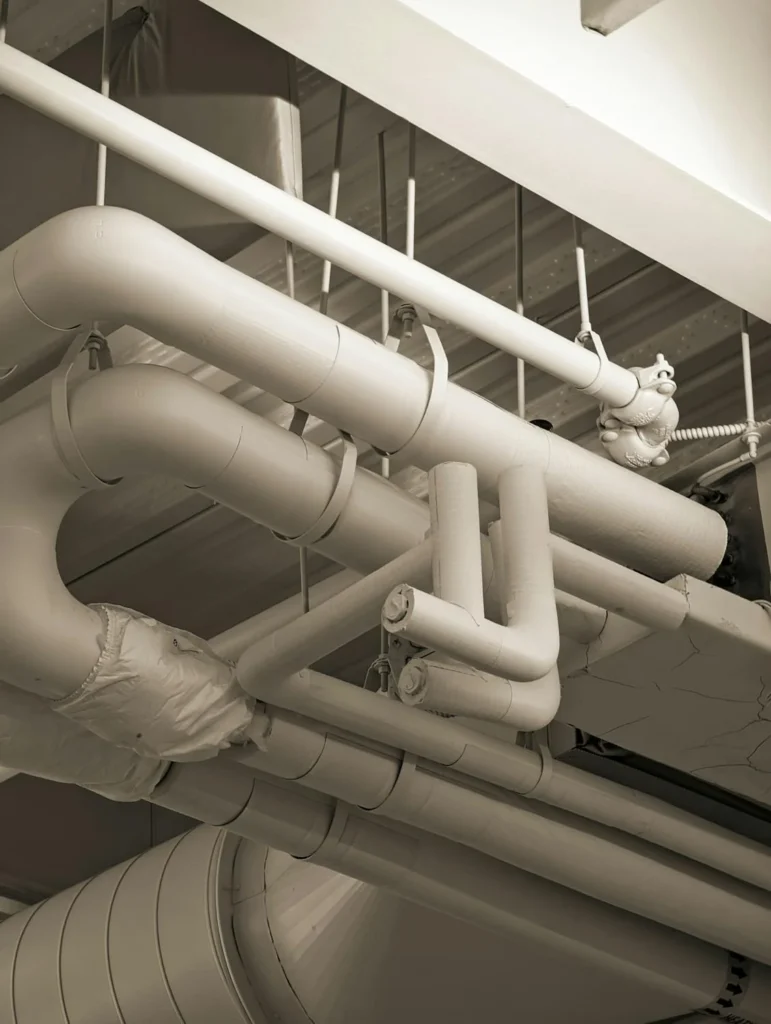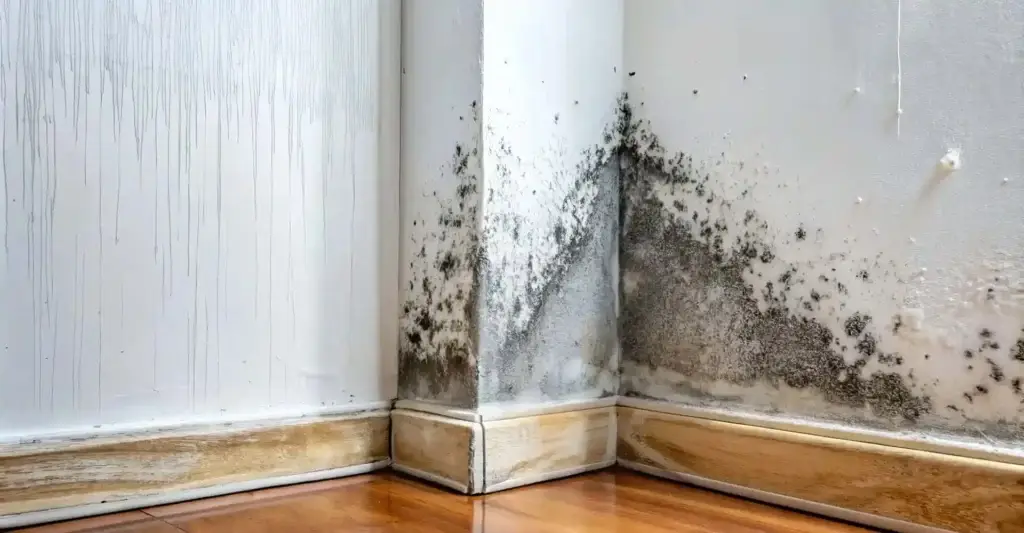Quick answer
To clean up and recover fast from soot damage in your UK property, immediately prioritise safety by ensuring ventilation and avoiding direct contact with contaminated surfaces, as soot contains toxic and corrosive chemicals that pose serious health risks and cause further property damage. While documenting for insurance, do not attempt extensive DIY clean-up, as improper methods can worsen contamination. For effective and safe recovery, professional soot damage restoration is essential. Experts utilise specialised techniques like HEPA vacuuming and chemical sponging for deep cleaning, alongside advanced odour elimination treatments, ensuring comprehensive removal of hidden contaminants, preventing long-term issues, and enabling a swift return to a safe environment.
Dealing with UK property affected by soot damage
A property fire alone is devastating to both homeowners and businesses. But it’s not just the initial fire that causes devastation, the aftermath can add further dangers and complications. Soot damage can severely impact homes and commercial properties and make an already bad situation worse. But choosing the right steps to take after a fire and acting fast can reduce damage and costs.
What is soot damage and why is it dangerous?
What is soot?
Soot is a fine black particle left behind after a fire incident caused by incomplete combustion. The blackened walls and surfaces of a fire and smoke damaged property is caused by soot. It coats surfaces and can be very difficult to remove without a professional soot and ash cleaning company.
Because soot particles are so small they can find their way on to almost everything, soot can often be found on:
- Walls
- Ceilings
- Furniture
- Electronics and sockets
- HVAC systems
Why it’s harmful
Soot damage is harmful because of the chemicals, compounds and heavy metals that make it up. These chemicals are often very toxic and corrosive, posing a threat to your health and your property. Exposure to soot can cause:
- Respiratory issues
- Skin irritation
- Cardiovascular issues
- Increased risk of cancer
Because of the corrosive nature of soot, it can further add to the damage in your property if left untreated. Here are a few of the risks that soot damage poses to your property:
- Electrical hazards: Soot can damage electronics and wiring, creating a risk of electrocution and electrical fires.
- Surface corrosion: Contaminated walls will gradually corrode and become more damaged over time. This means that restoration words become more complex, time consuming and expensive.
- Structural damage: If important load bearing structures in your property are damaged due to corrosion it will compromise the structural integrity of the property.
First steps after discovering soot damage
Prioritise safety
- Ventilate the area: If it’s safe to do so, open windows and doors to ventilate the area. This will help to remove as much of the airborne soot as possible.
- Avoid touching any contaminated surfaces: When you enter the area affected by the smoke and soot damage you should avoid touching any of the surfaces to avoid cross contamination.
- Wear suitable PPE: Ensure that you’re wearing a suitable mask and gloves at the very least when you enter the area of concern in your property.
Document the damage
Taking photos and videos of the soot damage is very important for your first steps after the fire. This visual evidence will help with your insurance claim process and can assist with speeding up the claim and restoration process.
The difference between domestic and commercial soot damage
When it comes to soot damage, the impact varies greatly depending on whether it occurs in a home or a business setting. While both require urgent attention, the scale, complexity, and consequences differ significantly. Understanding these differences is key to choosing the right restoration approach.
Domestic properties
The London Fire Brigade state that roughly 60% of house fires begin in the kitchen. Common residential soot damage issues include:
- Ceiling and wall staining: Especially above stoves or fireplaces.
- Soft furnishing contamination: Curtains, carpets, sofas and mattresses absorb soot and odours quickly.
- Odour and air quality issues: Lingering smoke smell affects comfort and health.
- Health risks: Children, pets, and those with respiratory conditions are especially vulnerable to airborne particles.
Though on a smaller scale, domestic soot damage still requires professional treatment to fully clean and restore your living space.
Commercial soot damage
In a business environment, soot damage often follows electrical fires, warehouse incidents, or equipment malfunctions. Commercial buildings tend to be larger, have more complex systems, and rely on continuous operation.
Key challenges of commercial soot damage include:
- Scale of contamination: Larger surface areas and open-plan layouts mean soot spreads further and settles deeper.
- Damage to sensitive equipment: Electronics, servers, POS systems, and machinery are vulnerable to fine soot particles.
- Operational downtime: Every hour your business is closed equals lost revenue.
- Health & safety compliance: Businesses must adhere to stricter air quality and cleanliness standards post-incident.
- Stock and inventory damage: Especially in retail, warehouses, or food service industries.
The consequences of soot damage in commercial settings extend far beyond cleaning, they affect your bottom line, employee productivity, and customer trust. Knowing what steps to take can make all the difference.
Benefits of professional soot damage restoration
Soot damage is more than cosmetic, it poses serious risks to health, property, and air quality. Here’s why hiring professionals is the smart choice for both homes and businesses:
1. Deep Cleaning: Removes Hidden Contaminants
Professionals use HEPA vacuums and chemical sponges to eliminate fine soot particles, preventing stains and recontamination.
2. Odour Elimination: Clears Lingering Smoke Smell
Advanced techniques like thermal fogging and ozone treatments remove smoke odours from walls, furniture, and air.
3. Health Protection: Improves Air Quality
Soot contains toxins and heavy metals that can trigger respiratory issues. Experts ensure a safer indoor environment.
4. Damage Prevention: Reduces Long-Term Costs
Untreated soot can corrode electronics, stain surfaces, and lead to mould. Fast, professional clean-up protects your property.
Faster Recovery: Minimises Downtime
Professionals act quickly with tailored plans to restore your space, reducing disruption to daily life or business.
How to choose the right service provider
- Soot Damage Expertise: Choose specialists with proven experience in soot and smoke restoration.
- Domestic & Commercial Services: Ensure they handle both home and business properties.
- Certified & Insured: Look for BDMA certification and full insurance coverage.
- Rapid Response: Opt for companies offering 24/7 emergency callouts.
- All-in-One Service: Prefer providers who manage assessment, clean-up, and restoration in-house.
- Positive Reviews: Check for verified customer feedback and case studies.
Conclusion: Act fast to minimise soot damage
Whether it’s your home or your business, soot damage isn’t something you want to ignore. The longer you leave it, the worse it gets. That means more damage, more costs, more stress.
Getting professional help quickly can make all the difference. We’re here to make the process simple, safe, and stress-free. Don’t wait. Get in touch with us today and let our experts handle the clean-up, so you can get back to normal, fast.
Soot damage in UK property: Frequently asked questions
What are the dangers and health risks of soot damage in a property?
Soot damage is highly dangerous as it contains toxic and corrosive chemicals, heavy metals, and carcinogens from incomplete combustion. Exposure can lead to severe health risks, including respiratory issues (asthma, bronchitis), skin irritation, cardiovascular problems, and an increased risk of cancer. If left untreated, soot’s corrosive nature can also cause further property damage, such as etching surfaces, tarnishing metals, damaging electronics, and potentially compromising electrical systems.
What should you do immediately after discovering soot damage in your home or business?
Immediately after discovering soot damage, prioritise safety. Ensure the affected area is ventilated if safe to do so, and avoid touching contaminated surfaces to prevent spreading soot and causing further damage. Wear appropriate Personal Protective Equipment (PPE), such as a mask and gloves. Crucially, document all damage thoroughly with photos and videos for your insurance claim before attempting any clean-up.
Why is professional soot damage clean-up essential, and can I clean it myself?
Professional soot damage clean-up is essential because soot particles are microscopic, toxic, and highly corrosive, penetrating deep into materials. While minor, localised soot might be tackled with extreme caution, extensive DIY cleaning is not recommended. Improper methods can embed soot further, smear it, or expose you to harmful contaminants. Professionals use specialised equipment like HEPA vacuums, chemical sponges, and advanced deodorisation techniques to ensure thorough removal, protect health, prevent secondary damage, and eliminate lingering odours effectively.
How do professionals remove soot and lingering odours from a property?
Professionals remove soot and lingering odours using a multi-stage approach. This involves deep cleaning affected surfaces with specialised techniques such as HEPA vacuuming for fine particles and chemical sponges that absorb soot without smearing. For odours, advanced methods like thermal fogging, ozone treatments, or hydroxyl generators are employed to break down odour molecules at a molecular level, neutralising embedded smells in porous materials and fabrics. Ideal Response offer a professional smoke odour removal service that guarantees odour neutralisation.
What qualifications should I look for in a professional soot damage restoration company in the UK?
When choosing a professional soot damage restoration company in the UK, look for accreditations such as BDMA (British Damage Management Association) or IICRC (Institute of Inspection, Cleaning and Restoration Certification) for Fire & Smoke Restoration Technicians. Essential qualities include proven experience with various types of soot damage, a rapid 24/7 response capability, comprehensive all-in-one services (from clean-up to reconstruction), and positive customer reviews reflecting their reliability and expertise.
What is the difference in impact of soot damage on domestic vs. commercial properties?
The impact of soot damage differs between domestic and commercial properties primarily in scale and consequence. For homes, key impacts include surface staining, soft furnishing contamination, and air quality issues, with a significant emotional toll. For businesses, soot damage results in larger-scale contamination, damage to sensitive equipment, significant operational downtime, stock loss, and compliance challenges, directly affecting profitability and business continuity.

Murat Kunacav - Technical Account Manager
Murat has a rich blend of over 15 years of experience from both the insurance and restoration industries, including a Bachelor's degree in Business Management. Since joining Ideal Response in 2020, Murat has become a specialist in technical scoping and managing major and complex loss restoration projects. With a focus on high-net-worth client management and intricate insurance-led restoration, he excels at collaborating across all parties, insurers, loss adjusters, contractors, and clients, to ensure seamless, end-to-end project delivery. Murat believes that the power of technical expertise lies in building strong relationships and delivering compliant results, no matter the scale or complexity.





















